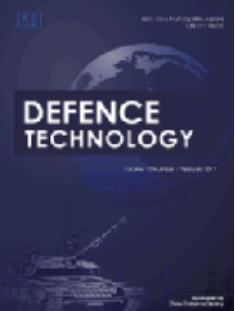基于机器学习和数值模拟的梯度密度冲击器设计:实现可控应力应变率
IF 5.9
Q1 ENGINEERING, MULTIDISCIPLINARY
引用次数: 0
摘要
梯度密度冲击器动态加载技术是获取武器材料动态物性参数的关键技术。GDI结构设计的准确性和及时性是实现可控应力应变率加载的关键。在这项研究中,我们首次将一维流体计算软件与机器学习方法相结合。我们首先阐明了GDI结构控制应力和应变速率的机制。随后,我们构建了一个机器学习模型来创建结构-属性响应面。结果表明,改变加载速度和层间厚度对应力应变速率有显著的调节作用。虽然靶层厚度与层间厚度存在一定的匹配关系,但阻抗分布指数和靶层厚度对应力调节的影响不显著。与传统设计方法相比,机器学习方法的效率提高了104-105倍,并且有可能实现全局最优,有望指导GDI的设计。本文章由计算机程序翻译,如有差异,请以英文原文为准。
Graded density impactor design via machine learning and numerical simulation: Achieve controllable stress and strain rate
The graded density impactor (GDI) dynamic loading technique is crucial for acquiring the dynamic physical property parameters of materials used in weapons. The accuracy and timeliness of GDI structural design are key to achieving controllable stress-strain rate loading. In this study, we have, for the first time, combined one-dimensional fluid computational software with machine learning methods. We first elucidated the mechanisms by which GDI structures control stress and strain rates. Subsequently, we constructed a machine learning model to create a structure-property response surface. The results show that altering the loading velocity and interlayer thickness has a pronounced regulatory effect on stress and strain rates. In contrast, the impedance distribution index and target thickness have less significant effects on stress regulation, although there is a matching relationship between target thickness and interlayer thickness. Compared with traditional design methods, the machine learning approach offers a 104–105 times increase in efficiency and the potential to achieve a global optimum, holding promise for guiding the design of GDI.
求助全文
通过发布文献求助,成功后即可免费获取论文全文。
去求助
来源期刊

Defence Technology(防务技术)
Mechanical Engineering, Control and Systems Engineering, Industrial and Manufacturing Engineering
CiteScore
8.70
自引率
0.00%
发文量
728
审稿时长
25 days
期刊介绍:
Defence Technology, a peer reviewed journal, is published monthly and aims to become the best international academic exchange platform for the research related to defence technology. It publishes original research papers having direct bearing on defence, with a balanced coverage on analytical, experimental, numerical simulation and applied investigations. It covers various disciplines of science, technology and engineering.
 求助内容:
求助内容: 应助结果提醒方式:
应助结果提醒方式:


